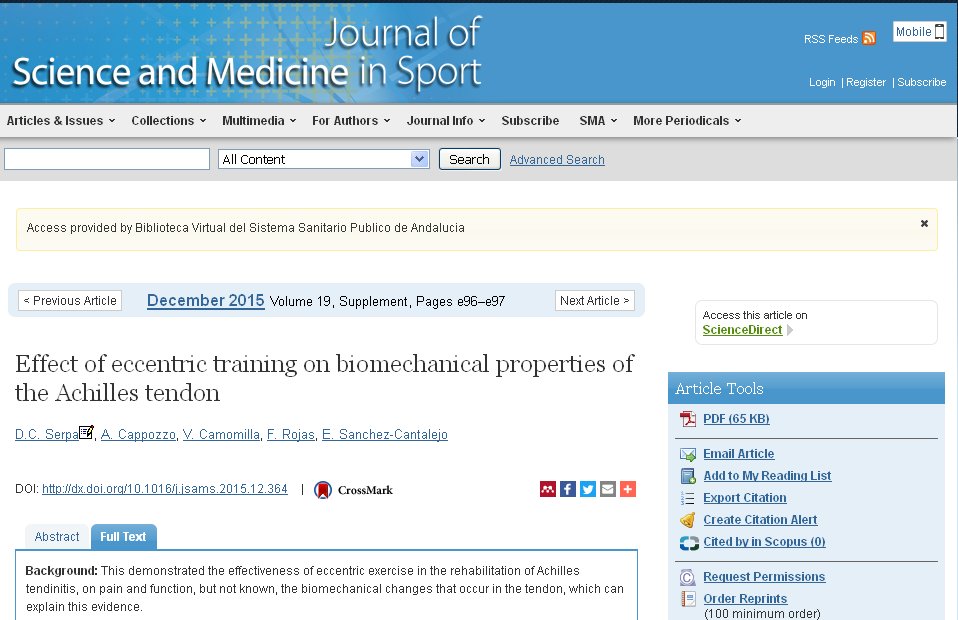
Background: This demonstrated the effectiveness of eccentric exercise in the rehabilitation of Achilles tendinitis, on pain and function, but not known, the biomechanical changes that occur in the tendon, which can explain this evidence.
Methods: A group of 17 healthy men, with 43.76 ± 8.03 years performed eccentric exercise training of plantiflexors with one leg and concentric exercise training with the other leg, working at a submaximal load, average volume and moderate speed during eight weeks, 5 times a week. Outcome measures included plantiflexors moment of force, elongation (stereophotogrammetry and ultrasound measures) and stiffness of Achilles tendon.
Results: we found that stiffness of Achilles tendon decreased significantly from 29.8 N/mm (±11.8) to 25.7 N/mm (±9.7) (P < 0.007) in the leg working eccentrically and increased from 22.1 N/mm (±9.6) to 24.6 N/mm (±9) (P < 0.004) in the leg working concentrically.
Discussion: Our results showed that eight weeks of eccentric training with submaximal loads, decreased Achilles tendon stiffness in healthy individuals, by contrast, concentric exercise training was related to an increased Achilles tendon stiffness. Effect of eccentric training on tendon stiffness, has been previously studied by Mahieu et al. (2008) and Morrissey et al. (2010), who despite using a similar methodology, found different results. Mahieu et al. (2008) conducted a randomized, controlled, pre-test–post-test to assess effects of eccentric training for 6 weeks (74 volunteers), and found significant change in stiffness after this training, but also found increasing range of motion in ankle dorsiflexion and decreased passive resistance.
Possible explanations to Mahieu et al. (2008) results could be that there was tendon adaptation to eccentric exercise with sub-maximum load; tendons become more elastic in response to repeated elongation in downward movement of the heel, until reaching its maximum dorsiflexion range. Morrissey et al. (2010) conducted a randomized, pre-test–post-test, to assess effects of eccentric and concentric training during 6 weeks (38 volunteers), they found decreased tendon stiffness in the eccentric group, but there were not significant changes in the concentric group. We conclude that these changes are probably related to tendon structural plasticity in response to the repetition of eccentric movement in the complete range of planti-dorsiflexion.


